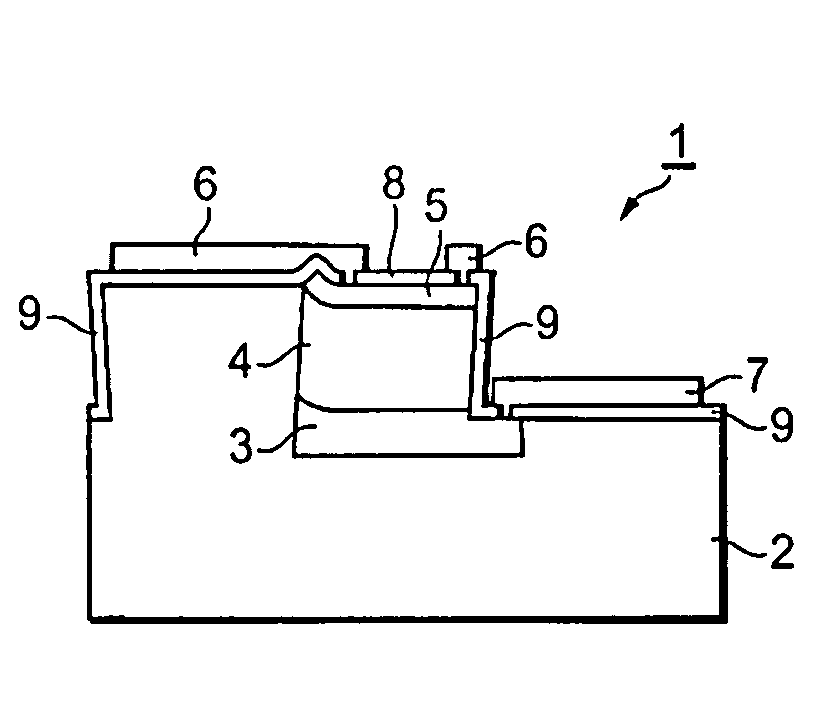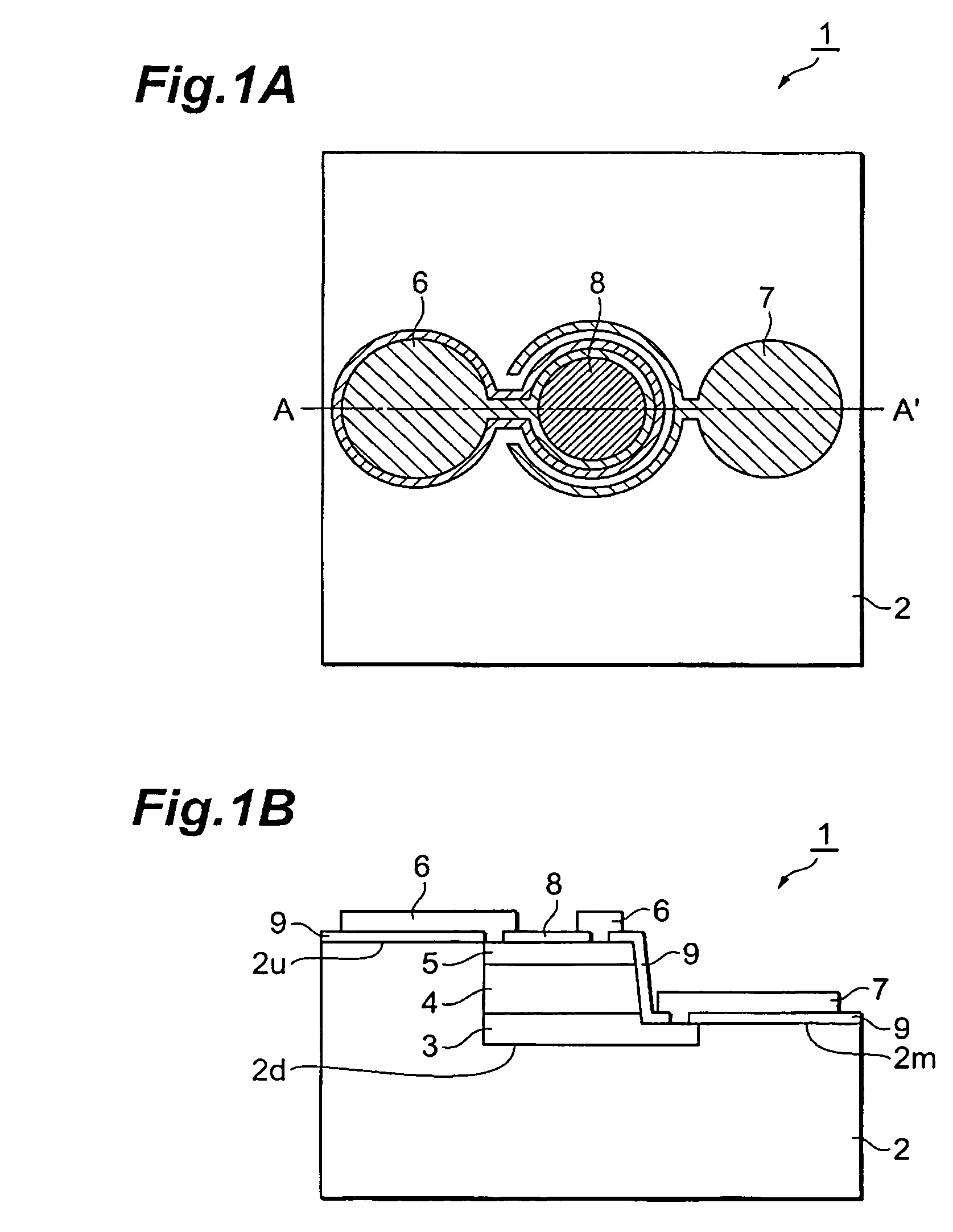Semiconductor photodetector and its production method
a technology of semiconductor photodetectors and production methods, applied in the direction of semiconductor devices, electrical appliances, solid-state devices, etc., can solve the problems of reducing the yield and reproducibility of semiconductor photodetectors, requiring a complicated and hard process, and disconnection or insulation failure, so as to reduce the projection of semiconductor layers and prevent the effect of a surface portion from slipping
- Summary
- Abstract
- Description
- Claims
- Application Information
AI Technical Summary
Benefits of technology
Problems solved by technology
Method used
Image
Examples
first embodiment
[0027]FIG. 1A is a schematic plan view of semiconductor photodetector 1 in the first embodiment and FIG. 1B a schematic sectional view along chain line AA′ in FIG. 1A. First, the configuration will be described. As shown in FIG. 1B, a semi-insulating GaAs substrate 2 has three top surface portions with different heights (which will be referred to as “upper step surface,”“middle step surface,” and “lower step surface” and which will be denoted by 2u, 2m, and 2d, respectively, in FIG. 1B). The heights of the respective step surfaces are set in decreasing order of height: the upper step surface, the middle step surface, and the lower step surface, and a level difference between the upper step surface and the middle step surface is preferably about 1-5 μm (specifically, 2.5 μm). A level difference between the middle step surface and the lower step surface is preferably about 0.1-2 μm (specifically, 0.5 μm). The step surfaces are formed so that the upper step surface and the middle step ...
second embodiment
[0043]The second embodiment of the present invention will be described with reference to FIGS. 3A, 3B, 3C, 3D, and 3E. FIGS. 3A, 3B, and 3C are schematic sectional views of semiconductor photodetector 1 in the second embodiment of the present invention, and the steps of FIG. 3A, FIG. 3B, and FIG. 3C are carried out in the aforementioned order of steps ①, ②, and ③. FIG. 3A shows a cross section along AA′ in FIG. 3D, and FIG. 3C a view showing a cross section along AA′ in FIG. 3E.
[0044]In the second embodiment detailed description will be given about the shape of the etching cross section in the recess forming step, which was not described in the first embodiment. Specifically, the second embodiment illustrates a case where the shape of the etching cross section is an inverted mesa shape. Here the inverted mesa shape is a state in which distances between two sides forming side walls in the etching sectional shape increase toward the bottom side (so-called -shape).
[0045]A production me...
third embodiment
[0048]The third embodiment of the present invention will be described below with reference to FIGS. 4A, 4B, 4C, 4D, and 4E. FIGS. 4A, 4B, and 4C are schematic sectional views of semiconductor photodetector 1 in the third embodiment of the present invention, and the steps of FIGS. 4A, 4B, and 4C are successively carried out in the same manner as in FIGS. 3A, 3B, and 3C. FIG. 4A corresponds to a cross section along AA′ in FIG. 4D, and FIG. 4C to a cross section along AA′ in FIG. 4E.
[0049]The third embodiment is different from the second embodiment in that the ohmic electrodes 6, 7 are arranged at an angle of approximately 90° around the recess being the lower step portion (with the recess in between) and in that sectional shapes are different between the two electrode sides.
[0050]As shown in FIG. 4C, the recess of the semi-insulating GaAs substrate 2 is formed so that only the p-side ohmic electrode 6 is of the inverted mesa shape, out of the two side wall portions forming the section...
PUM
 Login to View More
Login to View More Abstract
Description
Claims
Application Information
 Login to View More
Login to View More - R&D
- Intellectual Property
- Life Sciences
- Materials
- Tech Scout
- Unparalleled Data Quality
- Higher Quality Content
- 60% Fewer Hallucinations
Browse by: Latest US Patents, China's latest patents, Technical Efficacy Thesaurus, Application Domain, Technology Topic, Popular Technical Reports.
© 2025 PatSnap. All rights reserved.Legal|Privacy policy|Modern Slavery Act Transparency Statement|Sitemap|About US| Contact US: help@patsnap.com



